The P1879 Artillery sawback sword bayonet is probably one of the most recognizable of British bayonets. More sword than bayonet, it was a true combination tool. The saw function must have been ideal for clearing brush in the field, and whether handled as a sword or fixed as a bayonet, would have been truly daunting for any foe.
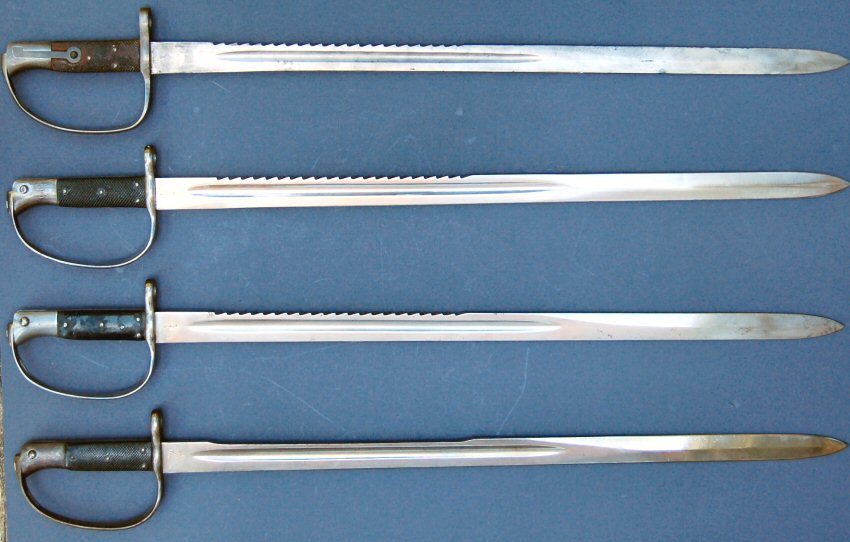
| Top : | AC bayonet converted from P1859 Cutlass bayonet in 1878 |
| Second : | P1879 new manufacture, AC MkI |
| Third : | P1879 AC MkII, enlarged muzzle ring |
| Bottom : | P1879, downgraded, sawback removed |
Development of the carbine and bayonet was undertaken at RSAF Enfield, who initially produced 5,000 of the new carbines during 1878. The nosecap on the Martini Henry Artillery Carbine MkI was a departure from previous designs insofar as it was a one-piece casting, leaving just enough of the barrel clear to take the bayonet muzzle ring. The upper band incorporates the bayonet lug.
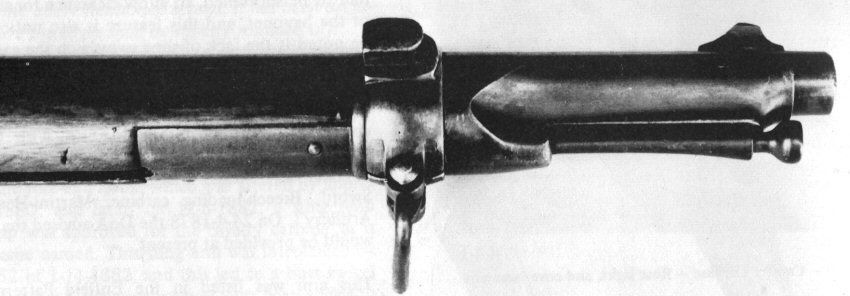
Two proposed patterns of bayonet were tested, with final approval being given to a 25.75inch blade sword bayonet with a sawback.

The initial manufacture of Artillery Carbine bayonets at Enfield took a somewhat complicated course. During the Government fiscal year April 1878 to March 1879, existing P1859 cutlass bayonets were drawn from stores and converted to the new carbine bayonet. The process entailed the removal of the bowl guard, fitting a new crossguard with muzzle ring and incorporating a knucklebow, reworking the blade by grinding a fuller into both sides and cutting saw teeth into the back. A total of 1,340 bayonets were converted in this manner with their conversion date duly stamped into the ricasso. The example in my collection is dated November 1878, and still shows the remains of the original makers mark – the knights head of Weyersburg, Solingen, Germany from its previous life as a P1859 cutlass bayonet.
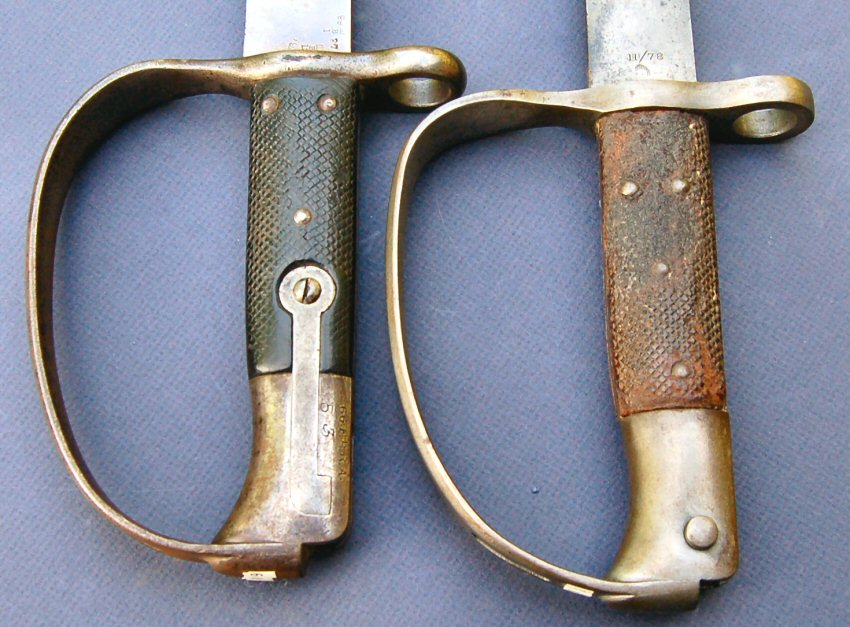
Other differences between newly made P1879 bayonets and these earlier converted bayonets are illustrated in the image to the left. They include : the leafspring located on the right hand side of the pommel; the edges of the crossguard and knucklebow finished square rather than rounded; the location of the grip rivets; a shorter fuller, and a thinner blade resulting from the grinding process.
Between 1881 and 1886, 449 of these conversions had their hilts upgraded to conform to the sealed P1879, leaving only 914 in their original form. Examples of these 449 bayonets can be identified by the shorter fuller, thinner blade and 1878 issue date. There was no official Pattern designated to these conversions.
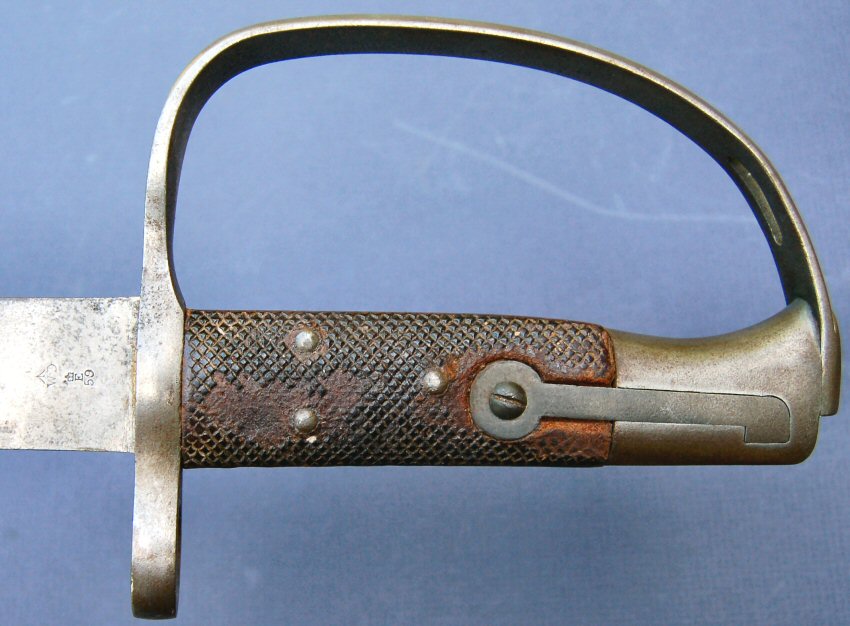
The Pattern 1879 Artillery sawback bayonet proper was approved in July of that year, and the vast majority were manufactured at RSAF Enfield through to 1890, with a small contract of approximately 2,000 being let to Wilkinson.

For the relatively short span of their official existence, they saw remarkably intense service. The example in my collection bears an issue date for 1885, with subsequent re-issue dates for 1893, 1895, 1897 and 1899. Birmingham Repair inspector stamps are also evident, indicating refurbishment at some point in its service life.
At the turn of the century and through the early 1900s there was a massive undertaking to re-equip British armed forces with .303” caliber arms. Always a step or two behind their infantry comrades, the Artillery benefited from hand-me-down .455” Martini Henry rifles converted into the MH AC MkII as a stopgap measure. The conversion was a relatively simple process. The rifle barrel was reduced in length, and a new, old-style nosecap fitted.
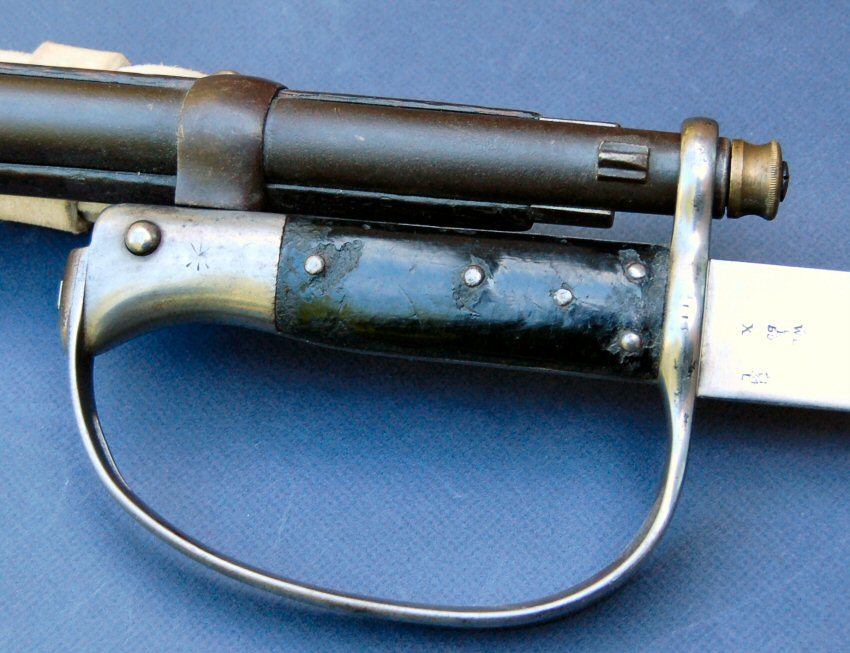
The P1879 bayonet was still considered suitable, however there was one tiny problem. The outside diameter of the muzzle of the AC MkII was larger then the MkI. The solution was simple. Enlarge the muzzle ring of the bayonet to 18mm from 17.5, in order to fit.
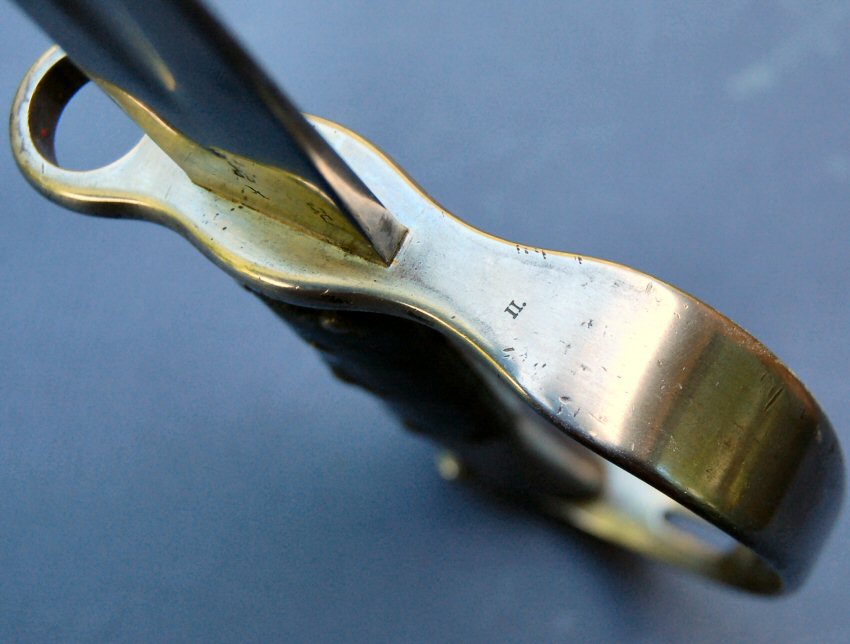
However, since both Marks of the Artillery Carbine were in service together, and the accompanying bayonets were identical except for the m/r diameter, how were the correct bayonets for the appropriate arm to be easily distinguished? Again, the solution was a simple one. Bayonets with the enlarged muzzle ring for the AC MkII were stamped with a small Roman II under the knuckle bow.
The final item to examine is the so-called ‘P1879 sawback removed’. At the turn of the century, logistics and supply for forces in the field was evolving into a fine art. The need for foraging diminished, and the purpose of the sawback redundant.
A number of writers have suggested that the continued use of bayonets with sawbacks became a point of contention. Considered ‘barbaric’, some of those in use were modified by grinding away the teeth. Really just how much less barbaric a bayonet sans-dents is left for the reader to decide.

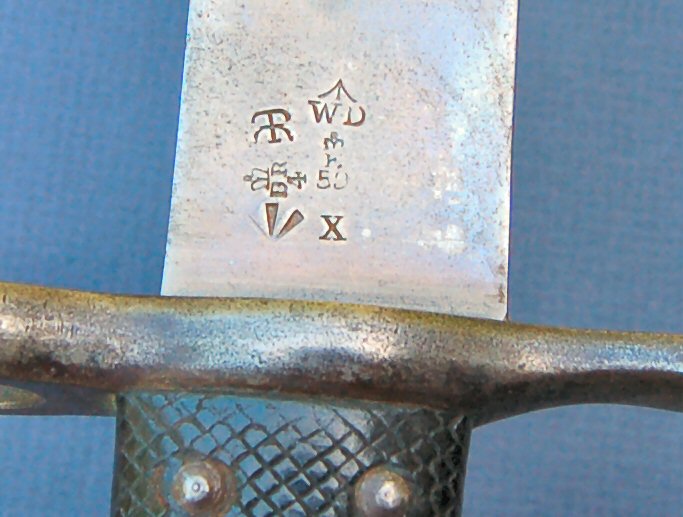
To date there is no documentary evidence to support the notion this was officially sanctioned. The few examples I’ve seen all have the mirrored ‘R’ marking, indicating the weapon was downgraded, often relegated for Drill Purposes. Certainly many of the Martini Henry Artillery Carbines were treated thus, ending their days in the hands of Cadet Forces. It’s therefore possible that some of the bayonets accompanied them and were modified by removal of the sawback for no greater reason than preventing youngsters from damaging themselves or each other.
In summary then, this imposing bayonet is well worth examining closely for evidence of modification or variation.
| Pattern | Production | Quantity | Carbine | Comments |
| P’59 Cutlass conversions |
Enfield | 1,340 | MH ACMkI | Converted 1878. 449 later upgraded to P’79 hilts |
| P1879 | Enfield | 65,143 | MH ACMkI | Approved July 1879 |
| Wilkinson | 2,000 | MH ACMkI | ||
| P1879 | - | - | MH ACMkII | Muzzle ring enlarged to 18mm. The quantity modified is unknown, but total production of MkII carbines was 38,407 compared with a total production of 57,208 MkI carbines. |
- - O O O - -
Since posting this Feature, fellow collector Michael Curren has kindly contributed the following images of a Wilkinson made example of the P1879 bayonet. Note the Birmingham Repair inspectors stamp, and reissue date of 1900.



Many of these bayonets and carbines found their way into the hands of the Ulster Defence Force during the Irish Home Rule period of the early 20th. century. Pivately purchased from the Birmingham trade, they were illegally imported to arm the fledgling UDF. For an in-depth view of this facinating story, I highly recommend a visit to Michael's excellent website - www.irishbayonets.com